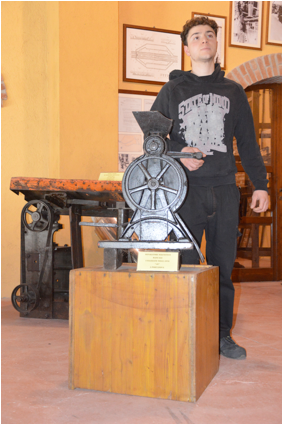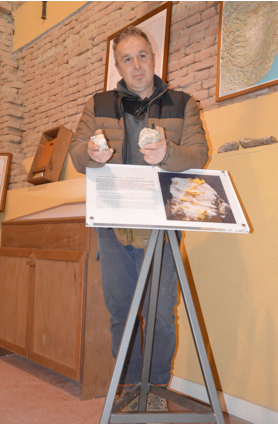Gold is the chemical element (atomic number 79 and specific gravity 19,3) enjoyed by humanity already in prehistory: the yellow metal of soft and ductile transition is indicated by the Egyptian literature around 3000 BC. and the Old Testament. Gold has been appreciated by the Greek civilization, by Buddhism, on the Gospel according to Matthew, by economy, electronic industry, jewelry, dentistry. The endless tradition of minting gold coins has been extended to the tiny radius disk (10.5 mm) born (1800) in Turin to evoke the French hegemony over northern Italy taken over by the leader Napoleon and the decisive victory built by the Armée de Réserve in Marengo (14 June 1800).
Gold at the native stage is defined by the form of nuggets, specks, grains laid on the rocks and on the alluvial site. The collection of gold has also grown on the plain of Alexandria: the museum ”Oro dell’Orba” highlights the wonderful history expanded from rural civilization to industrial culture. The equipment exhibited at the Merlanetta farmhouse in Casalcermelli is also the setting for the guided tour by the owner Daniele Cermelli and his son Mirko to the historical museum appreciated by ten thousand of visitors converged from 2019 on the prepared area of 250 square meters.
”Alto Monferrato – was reported by the owner – joined the group of Voltri (the mountain range stretched from Genoa to the crossroads to the Maritime Alps, defined as Apennines by geography and Alpine by geological structure) is littered with invisible or sharp layers of white quartz: the ice stone is forged by the crystallization of magmatic vapors and mineral substances (gold, rutile, zircon, garnet, magnetite, ilmenite) from the eroded rock from the earth’s depths to the Orba stream. Gold mining dates back to the pre-Roman era and the Celto-Ligurian syllable Or associated with the toponyms Bormida, Dora, Gorzente, Orco, Orba exalts the gathering (95%) of golden rivers of Italy on the northwestern territory”.
”The crossing of two streams, Orba and Piota, – was added by Mr Daniele – was chosen by the ancient Romans to found the city of Rondinaria and force the slaves to sift the sand: the origin is shared by the necropolis reserved for gold diggers (1948) on the territory adjacent to Casalcermelli and combined with the city of Rondinella now buried and almost completely unexplored. Gold mining complementary to agriculture was practiced by Casalcermelli rural population despite the intimidation spread by the Marquis del Bosco (XI century): the ban has fallen at the Napoleonic era. The tooling, universal a priori from the shared experience of gold diggers, precedes the wooden cyclopean dredge launched on the bed of Orba (April 3, 1887) here in Casalcermelli to extract 800 grams of gold from the analysis of 2 thousand cubic meters of lithoid material each day. The industrial equipment was knocked down by the water flooded by the stream Orba (13 October 1892)”. ”The arch united by the middle of two centuries (XIX and XX) – was declared by Mr Daniele – to flow along the Orba stream with the gold digger sitting on the rowing boat and provided with wooden plates to sift the gold sand and a vial hanging around his neck to stow the straw soaked in water. The ampoule sealed by the cap obtained from the contour, raw and steeped in pig fat, hemp grown for the textile industry, enhances the rural acumen and the eco-sustainable agriculture of the past. The Italian law prevents to extract gold on the site defended by the environmental constraint: the visitor seduced by experiential tourism can search for gold here at the Orba Special Nature Reserve, the only area of Italy legitimized by the Piedmont Region to manage the yellow metal extraction stimulated by the amateur, scientific and educational target. The tourist trained by the guide can, thus, lay the ladder parallel to the water to take advantage of the current and remove the lighter substance of matter already sieved. The concentrated and embanked material on the steps is then poured onto the plate: the gold sand returned from the initial rinsing undergoes the preliminary washing to the cleaning carried out by the brush and the removal of straws then protected by the ampoule. The activity increases awareness: gold is defined by the specific weight (19.5 kg per liter) higher than iron (7 kg per liter) and water (1 kg per liter). The bar of pure gold with a volume equal to the packet of cigarettes is distinguished by the weight of 2 kg and the value of 120 thousand euros: the cinematographic sequence agitated by the takeoff of golden bars of thirty centimeters in length is ridiculous”.

